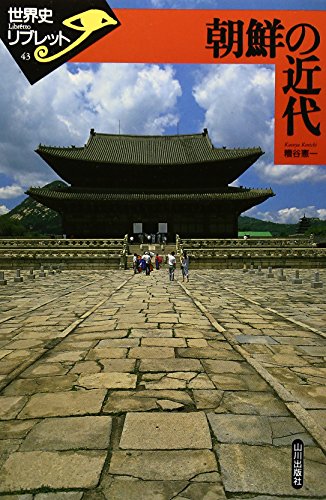2 0 0 0 日本史研究における東アジア認識の再検討
1.平成14〜17年度の各年度に、分担研究者がそれぞれの分担研究を推進するために、韓国及び日本各地において史料調査・収集を行った。2.分担研究者が集う共同研究会を18回開催し、日本史、朝鮮史、日朝関係史に関する報告・討論を行った。また研究の進め方、総括のために分担研究者による会議を7回行った。3.共同研究の総括と、韓国の日本史・朝鮮史研究者(ソウル大学校等に所属している)との研究交流のために、2002年8月23日〜25日、2003年8月22日〜24日、2004年8月20日〜22日、2005年8月26日〜28日に、第5回〜第8回の日韓歴史共同研究プロジェクトシンポジウム(2002年・2004年は一橋大学において、2003年・2005年はソウル大学校において)開催した。日韓両国における歴史研究の現状と課題に関して相互に認識を深めるため、日本史、朝鮮史、日朝関係史上の重要な論点を逐次取り上げて、率直に議論を行っていくという方針により、毎回の準備と報告・討論が行われた。報告数は第5回〜第8回を通じて20本であり、韓国側は12本、日本側は8本である。4.シンポジウムを通じて、日韓両国の研究者のあいだで、「東アジア世界」という視座を設定して、日本社会と朝鮮社会を比較するという方法が有効であることを確認しあうことができた。今後も比較研究をさらに推進・深化させるために、平成18年度に向けて「日本・朝鮮間の相互認識に関する歴史的研究」という共同研究を準備することとなった。5.糟谷憲一が編集担当となり、第5回〜第8回シンポジウムの報告書を作成し印刷した。
- 著者
- 糟谷 憲一
- 出版者
- 社会経済史学会
- 雑誌
- 社会経済史学 (ISSN:00380113)
- 巻号頁・発行日
- vol.60, no.5, pp.708-711, 1995-01-25 (Released:2017-09-28)
1 0 0 0 OA 甲午改革期以後の朝鮮における權力構造について
- 著者
- 糟谷 憲一
- 出版者
- 東洋史研究会
- 雑誌
- 東洋史研究 (ISSN:03869059)
- 巻号頁・発行日
- vol.70, no.1, pp.100-126, 2011-06
The aim of this article is to elucidate the changes in the power structure in Joseon during the period from the Kabo Reform (July, 1894) to eve of the Russo-Japanese War (February, 1904). The author has previously examined the power structure of the Taeweongun 大院君 regime and the Min clan 閔氏 regime. The method of analysis involved a survey of those appointed to bureaucratic offices in the upper levels of the regime, clarifying to which of Four Sects (Sasek Tangp'a 四色黨派) and clans they belonged and calculating the ratios. As a result, the author made clear that within the Taeweongun regime, the ascendancy of Noron 老論, the largest faction, was unshaken, and that in the second half of the Min clan regime (December 1884 to July 1894) the ascendancy of the Noron faction became even stronger, and the power of the Yeohung Min 驪興閔 clan, which was a part of the Noron faction and was associated with the matrilineal side of the royal house, increased dramatically. In this article I survey appointees to the central government posts of Minister, Vice-Minister, and to the Department of the Imperial Household and analyze their affiliation with factions and clans. As this period was one of major political change, my analysis is based on distinguishing four periods: 1) that of the Kabo Reform, 2) that when the King resided in the Russian legation (February, 1896 to February, 1897), 3) that of the unfolding of the Independent Club's push for reform (February, 1897 to January, 1899), and 4) that of imperial despotism (January 1899 to February 1904). As a result, I have been able to clarify the following points. First, in regard to the Noron, the power of the Noron and influential clans, such as the Yeohung Min, declined within the upper levels of the government following the Kabo Reforms, but they maintained great influence in upper ranks of the Department of the Imperial Household. The power of the Noron in the upper levels of government was restored to the level of the latter half of the Min clan regime after the Independent Club began promoting reform. During that period, the Noron continued to occupy positions of power in the upper levels of the Department of the Imperial Household, and the power of the influential clans in the Noron faction was completely restored. Second, during the period of imperial despotism, the power of the Noron, from which ministerial appointments were made, increased, and the strength of the Noron in the upper levels of the Department of the Imperial Household grew to 50 percent. I believe this is an important factor in considering the foundation that supported imperial despotism.
1 0 0 0 IR 甲午改革期以後の朝鮮における權力構造について
- 著者
- 糟谷 憲一
- 出版者
- 東洋史研究会
- 雑誌
- 東洋史研究 (ISSN:03869059)
- 巻号頁・発行日
- vol.70, no.1, pp.100-126, 2011-06
The aim of this article is to elucidate the changes in the power structure in Joseon during the period from the Kabo Reform (July, 1894) to eve of the Russo-Japanese War (February, 1904). The author has previously examined the power structure of the Taeweongun 大院君 regime and the Min clan 閔氏 regime. The method of analysis involved a survey of those appointed to bureaucratic offices in the upper levels of the regime, clarifying to which of Four Sects (Sasek Tangp'a 四色黨派) and clans they belonged and calculating the ratios. As a result, the author made clear that within the Taeweongun regime, the ascendancy of Noron 老論, the largest faction, was unshaken, and that in the second half of the Min clan regime (December 1884 to July 1894) the ascendancy of the Noron faction became even stronger, and the power of the Yeohung Min 驪興閔 clan, which was a part of the Noron faction and was associated with the matrilineal side of the royal house, increased dramatically. In this article I survey appointees to the central government posts of Minister, Vice-Minister, and to the Department of the Imperial Household and analyze their affiliation with factions and clans. As this period was one of major political change, my analysis is based on distinguishing four periods: 1) that of the Kabo Reform, 2) that when the King resided in the Russian legation (February, 1896 to February, 1897), 3) that of the unfolding of the Independent Club's push for reform (February, 1897 to January, 1899), and 4) that of imperial despotism (January 1899 to February 1904). As a result, I have been able to clarify the following points. First, in regard to the Noron, the power of the Noron and influential clans, such as the Yeohung Min, declined within the upper levels of the government following the Kabo Reforms, but they maintained great influence in upper ranks of the Department of the Imperial Household. The power of the Noron in the upper levels of government was restored to the level of the latter half of the Min clan regime after the Independent Club began promoting reform. During that period, the Noron continued to occupy positions of power in the upper levels of the Department of the Imperial Household, and the power of the influential clans in the Noron faction was completely restored. Second, during the period of imperial despotism, the power of the Noron, from which ministerial appointments were made, increased, and the strength of the Noron in the upper levels of the Department of the Imperial Household grew to 50 percent. I believe this is an important factor in considering the foundation that supported imperial despotism.
1 0 0 0 朝鮮王朝政治史研究の課題をめぐって
- 著者
- 糟谷 憲一
- 出版者
- 東京学芸大学史学会
- 雑誌
- 史海 (ISSN:02886731)
- 巻号頁・発行日
- no.64, pp.58-69, 2017-05

